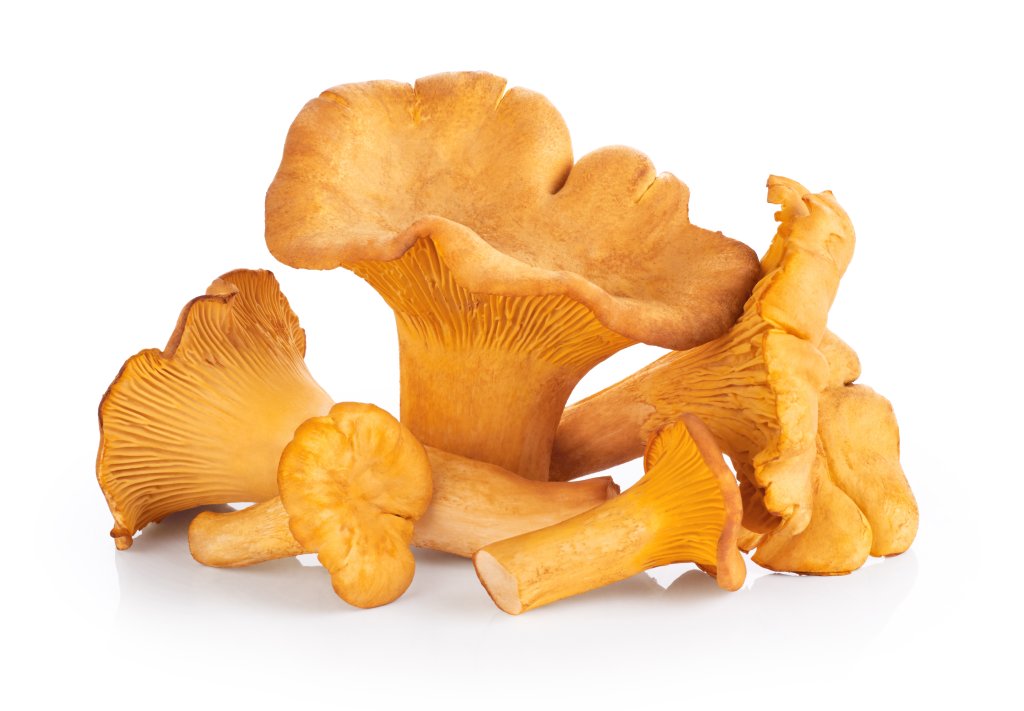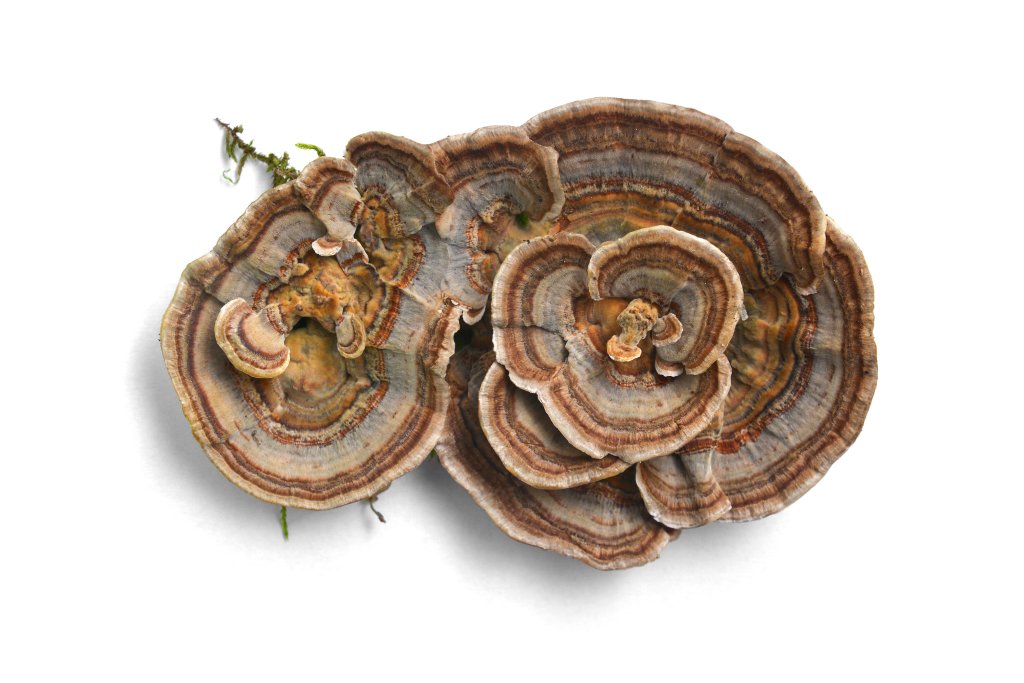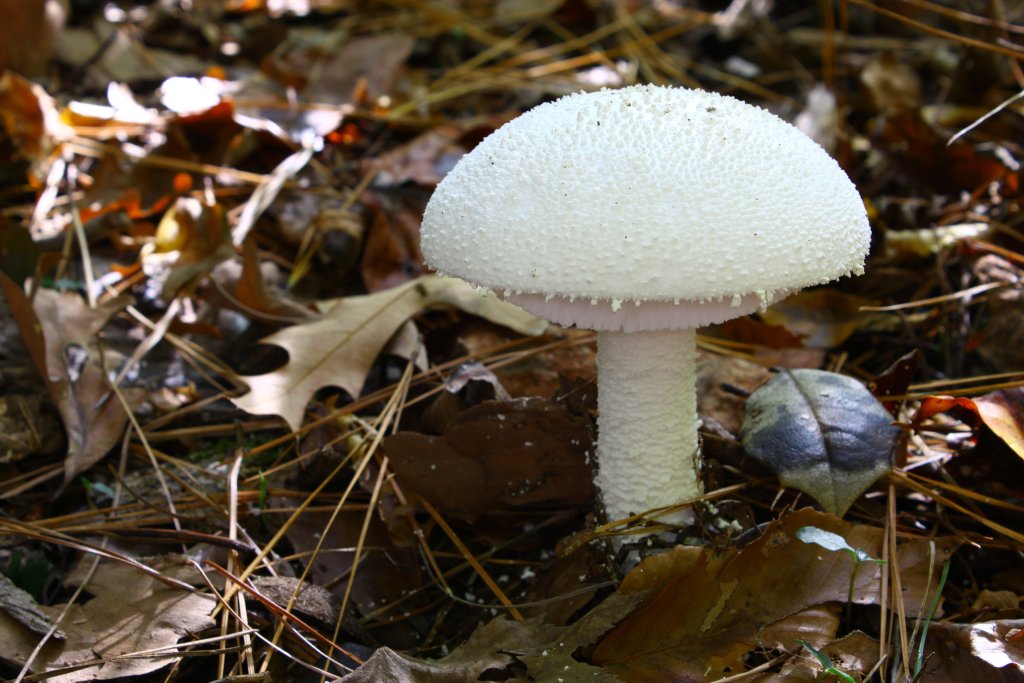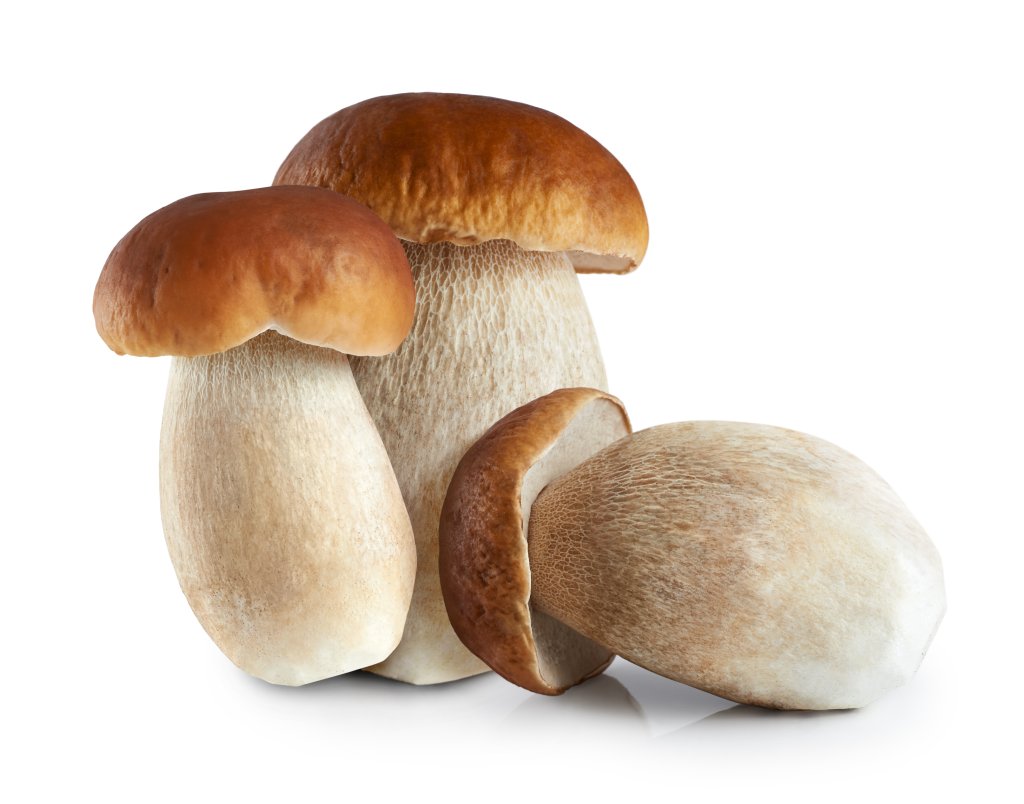Chanterelle (Cantharellus cibarius): Appearance: Chanterelles are known for their vibrant golden-yellow color and funnel-shaped caps. They often grow in clusters and have ridges rather than gills on the underside of the cap. Habitat: Look for chanterelles in mixed woodlands, particularly around oak and beech trees. Edibility: Highly prized by chefs for their delicate flavor, chanterelles are considered one of the finest wild mushrooms. However, proper identification is crucial, as some toxic look-alikes exist.

Hen of the Woods (Grifola frondosa): Appearance: Also known as maitake, this mushroom resembles a cluster of overlapping brownish-gray fan-shaped caps. Habitat: Hen of the Woods typically grows at the base of oak trees, forming large, imposing masses on decaying wood. Edibility: Renowned for its rich, earthy flavor and meaty texture, hen of the woods is a prized culinary ingredient in various cuisines.

Turkey Tail (Trametes versicolor): Appearance: As its name suggests, turkey tail mushrooms display concentric rings of various colors resembling the tail feathers of a turkey. Habitat: You can find turkey tail mushrooms on dead hardwood trees and fallen branches throughout the year. Edibility: While not generally consumed for their flavor, turkey tail mushrooms are valued for their medicinal properties and are often used in herbal supplements and teas.

Amanita bisporigera (Destroying Angel): Appearance: This deadly mushroom features a smooth, white cap and a slender stem with a bulbous base. It bears a resemblance to several edible species, making it particularly dangerous. Habitat: Amanita bisporigera often grows in mixed woodlands and can appear in both urban and rural environments. Toxicity: Consumption of even a small amount of this mushroom can be fatal, as it contains potent toxins that cause severe liver and kidney damage. Extreme caution should be exercised when foraging, and novice mushroom hunters are advised to avoid it altogether.

Bolete Mushrooms (Various species): Appearance: Bolete mushrooms are characterized by their sponge-like undersides instead of gills. They come in various shapes, sizes, and colors, with some species featuring distinctive pores that change color when bruised. Habitat: Bolete mushrooms can be found in a wide range of habitats, including woodlands, grasslands, and even urban environments. Edibility: While some bolete species are prized for their culinary value, others are inedible or even toxic. Careful identification is essential before consumption.

Before embarking on a mushroom foraging adventure, it’s crucial to educate yourself on mushroom identification, especially distinguishing between edible and toxic species. Consulting field guides, attending workshops, or joining mycological societies can enhance your knowledge and appreciation of these fascinating organisms while ensuring a safe and enjoyable foraging experience.







